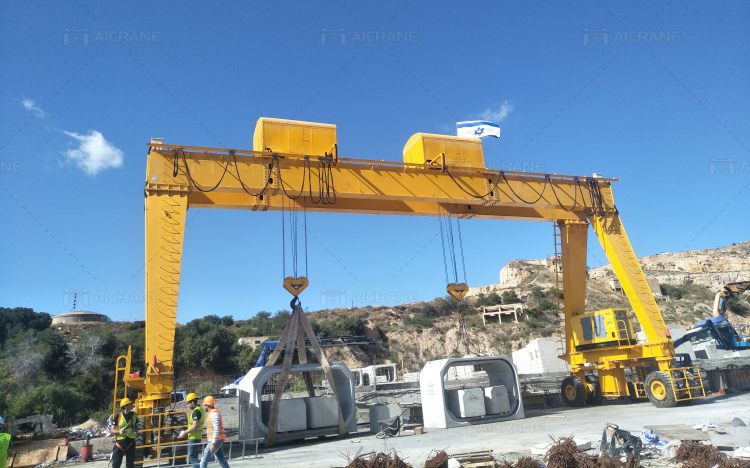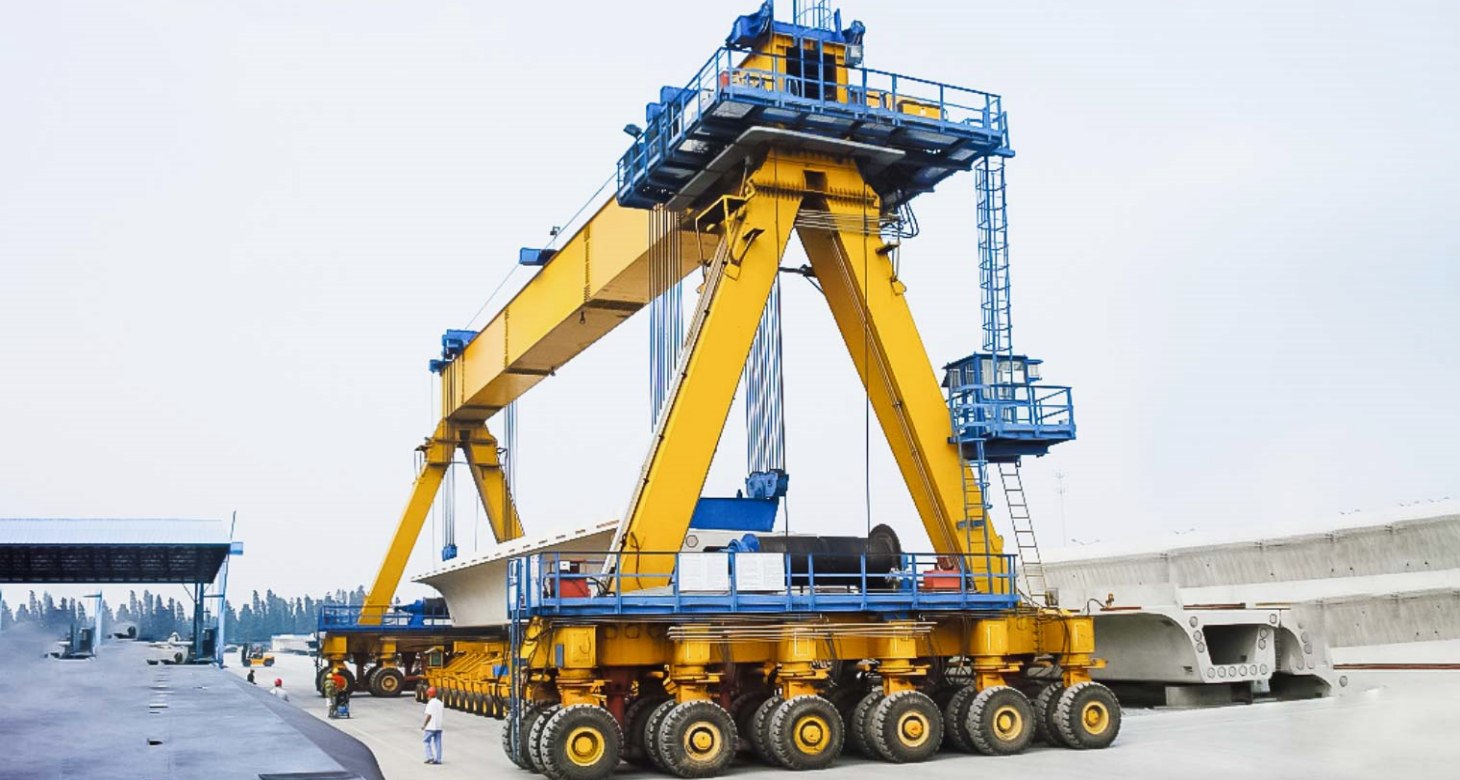In the fast-paced world of modern industry and logistics, the efficient handling of materials is paramount. Among the various types of cranes used in material handling operations, rubber-tyred cranes have emerged as a versatile and innovative solution. These cranes, equipped with rubber tires for mobility, are revolutionizing the way materials are moved, stored, and transported. In this article, we explore the capabilities and impact of rubber-tyred cranes in transforming material handling processes across various industries.
Rubber-tyred cranes, also known as rubber-tired gantry cranes (RTGs) or rubber-tired container cranes (RTCCs), are mobile gantry cranes designed for lifting, moving, and stacking heavy materials, particularly containers. What sets them apart is their rubber tires, which provide exceptional mobility both within confined spaces and over long distances. This feature allows rubber tyred cranes to navigate container yards, storage areas, and loading docks with ease.

The Evolution of Rubber Tyred Cranes
The history of rubber-tyred cranes traces back to the mid-20th century when they were initially developed for container handling in ports. Since then, they have undergone significant advancements, evolving into highly efficient and adaptable machines that cater to a wide range of industries. Some key factors that have contributed to their transformation include:
1. Advanced Automation: Modern rubber-tyred cranes often feature sophisticated automation systems, including remote control, which enhances precision and reduces the risk of accidents during material handling.
2. Enhanced Mobility: These cranes are designed with multi-wheel steering systems, enabling them to maneuver through tight spaces, making them ideal for congested container yards and busy industrial facilities.
3. Eco-Friendly Features: Some rubber tyred cranes are designed to be more energy-efficient, with regenerative braking systems and electric power options, aligning with the growing focus on sustainability in industry.
4. Increased Lifting Capacity: Recent models boast improved lifting capacities, allowing them to handle larger and heavier loads, which is particularly valuable in industries like construction and manufacturing.
Applications Across Industries
Rubber-tyred cranes have made a significant impact across a multitude of industries, transforming the way materials are handled and transported:
1. Port and Maritime Industry: These gantry cranes for containers are widely used in container terminals for the efficient loading and unloading of cargo ships. They stack containers in yards, ensuring optimal use of space and quick retrieval when needed.
2. Construction: Rubber tyred cranes are employed on construction sites for lifting and positioning heavy construction materials, machinery, and precast concrete elements with precision.
3. Manufacturing: They assist in moving raw materials, components, and finished products within manufacturing facilities, streamlining production processes and enhancing productivity.
4. Warehousing and Distribution: In logistics and distribution centers, these heavy cranes help with the organization, storage, and retrieval of goods, reducing handling times and improving inventory management.
5. Renewable Energy: Rubber-tyred cranes play a role in the renewable energy sector, assisting in the installation and maintenance of wind turbines and solar panels.

Benefits of Rubber Tyred Cranes
The adoption of rubber-tyred cranes offers several key benefits to industries:
1. Mobility and Flexibility: The ability to move swiftly within a facility or terminal makes rubber-tyred cranes highly versatile, adapting to changing operational needs.
2. Space Optimization: Their precise handling and stacking capabilities optimize storage space, reducing congestion and improving overall logistics efficiency.
3. Reduced Environmental Impact: The integration of energy-efficient features, such as electric power options and regenerative braking, aligns with sustainability goals and lowers the environmental footprint of material handling operations.
4. Safety: Automation and remote control features enhance safety by minimizing the risk of accidents and collisions during material handling.
Challenges and Considerations
While rubber-tyred cranes offer numerous advantages, they also present some challenges:
1. Initial Investment: The acquisition cost of rubber-tyred cranes can be substantial, requiring careful consideration of return on investment over time.
2. Maintenance: Regular maintenance is essential to ensure the continued reliability and safety of these machines, which can entail ongoing costs.
3. Operator Training: Skilled operators are required to handle rubber-tyred cranes effectively, emphasizing the importance of training programs.
4. Infrastructure and Space: Adequate infrastructure, such as suitable storage and maintenance areas, and sufficient space for crane operations are necessary prerequisites.
Future Innovations
The future of rubber-tyred cranes is promising, with ongoing developments aimed at further enhancing their capabilities. Expectations include:
1. Enhanced Automation: Greater automation and connectivity, enabling cranes to communicate with other equipment and systems for optimized logistics and material handling processes.
2. Energy Efficiency: Continued efforts to reduce energy consumption and emissions through advanced power systems, such as lithium-ion batteries and renewable energy sources.
3. Digitalization: Integration with digital platforms and data analytics for predictive maintenance, real-time monitoring, and performance optimization.
Conclusion
Rubber-tyred cranes have evolved from their origins as container handling equipment in ports to become versatile, mobile, and eco-friendly workhorses of modern industry. Their impact extends beyond the maritime sector, with applications in construction, manufacturing, logistics, and renewable energy. As industries continue to embrace automation and sustainability, rubber-tyred gantry handling cranes will play an increasingly vital role in transforming material handling processes, ensuring efficiency, safety, and environmental responsibility. These agile machines are indeed at the forefront of material handling innovation in the 21st century.
